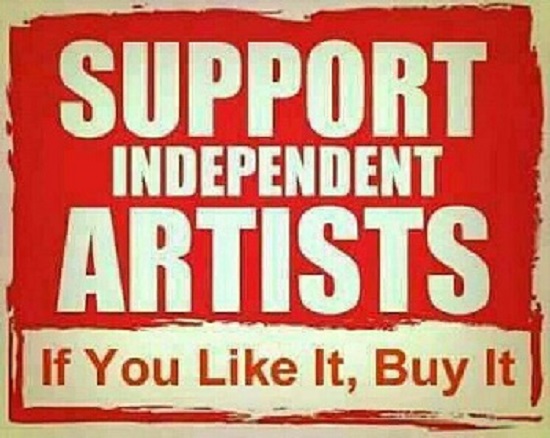
The Guardian published an article a couple of weeks ago by Tim Burgess of The Charlatans about the state of the music business in the light of Brexit, streaming and downloads. It’s an interesting read as far as it goes and it set the cogs whirring about why we got here, where we go next and will it be better or worse, or just different.
In my lifetime, the music business has been turned upside down. In the seventies, bands went out on tour to build up a following and to promote singles and albums, which is where the real money was. If you’ve survived this long and remember all this, bear with me, it’s worth getting some historical context. No internet, no mobile phones, only three TV channels and (until October 1973) no commercial radio. So you were left with the pirates like Caroline and the erratic reception of overseas stations like Luxembourg to let you know about new music. And the music press…
Every week I bought the NME, Melody Maker and Sounds and my paper round meant I could sneak a look at Blues & Soul and Disc/Disc and Music Echo as well. By 1973, with a bar job and a Saturday job with an entertainment agent booking acts for local pubs and clubs, I had a few bob to spend on some of the music I was reading about. Add the cost of my print habit to the cost of buying an album (about five percent of the average weekly wage in the mid-seventies) and being into music was a real financial commitment (even if you took the risk of doing a few temporary swaps with your mates to dip into their choices).
Buying music in the seventies wasn’t just an investment in listening to a piece of music. You exchanged your hard-earned (cash of course) for something physical that you carried home in a bag before lowering it on to the turntable, gently caressing the vinyl with the stylus and waiting for a glorious noise to erupt from the speakers. But let’s just rewind that a few minutes. If you bought an album and you were taking public transport home, you had the chance to look at the album artwork as well. A good album sleeve was so much more than a bit of on-shelf advertising; a twelve-inch square format created opportunities for quality photography and graphic design to enhance the musical content of the package. When it worked, it was an extra visual dimension to a piece of aural art:
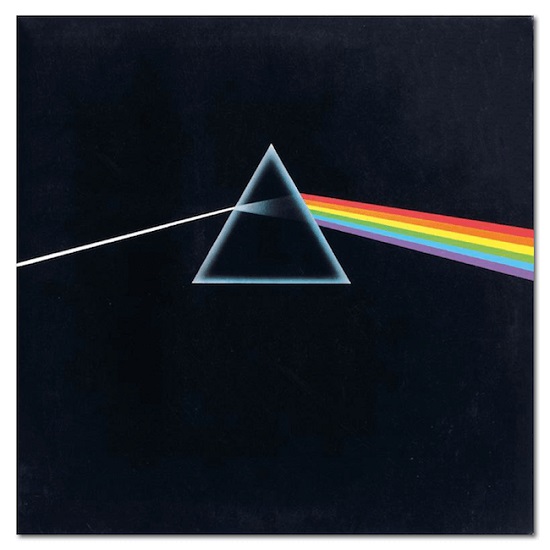
When it didn’t, it looked a lot like this (which proves that you can’t get it right all the time):
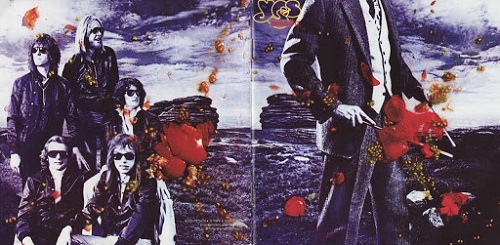
The gatefold sleeve doubled up the visual real estate (exploited perfectly on Thin Lizzy’s “Live and Dangerous” double album with a shedload of Chalkie Davies pics all over the outer and inner sleeves of the album):
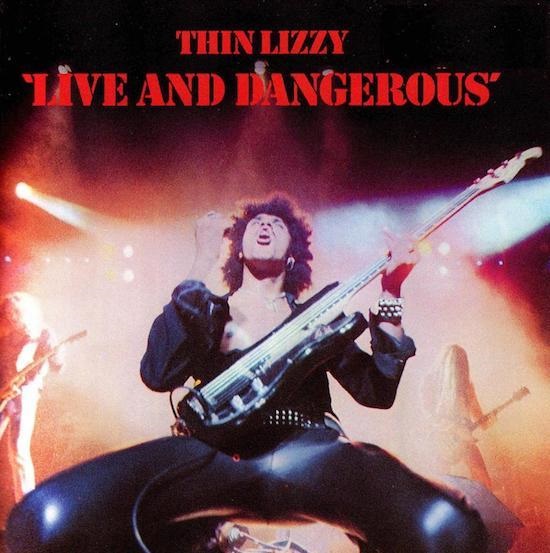
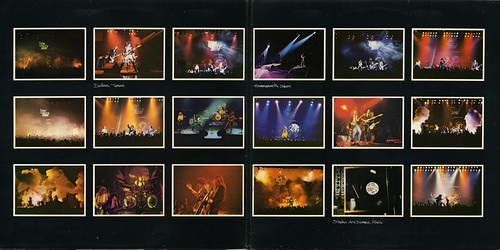
Designers started to exploit die-cut sleeves and all sorts of interesting innovations; PiL’s “Metal Box” looked really clever, but only if you hadn’t seen The Small Faces’ “Nut Gone Flake” packaging twelve years earlier.
The visuals were only part of the album experience; you could get a lot of text on a sleeve, particularly if you had a printed inner sleeve or three as well. There was all the obvious geek stuff; musicians involved, instruments played (or not played if you were Queen) and lyric sheets, but some bands made a real effort; UB40’s cover for the first album “Signing Off” in 1980 was a copy of the unemployment benefit attendance card, they’d been filling in before they broke through. Ten years later, Squeeze released a live album with a boxing concept, “A Round and A Bout” with a little bonus – they listed every gig they’d done between 1974 and 1990 on an insert with the album. Thanks guys, you’ve no idea how useful that’s been to me over the years. Seriously.
I’m sure you get the message by now. During the first vinyl era, the experience was about much more than just listening to the music. You could carry an album around at school as a sign of your taste and discernment and to impress the other gender (I pitied the guys who carried Groundhogs and Genesis albums, but that’s Darwinism for you). It was a bit like creating a mixtape a few years later and a playlist many years later. Or drinking bottled designer lager in the eighties. If you were a fan of music in the seventies or eighties you were committed and attached to it; it had a financial and emotional value. And it had a longer lifespan; since the mid-nineties, the norm is for singles and albums to achieve their highest chart position in the first week of release, but fifty years ago the climb to the top of the charts could take weeks (and probably a few bulk purchases in chart return shops to help it along).
This isn’t a dewy-eyed, rose-tinted trip down memory lane. The seventies and eighties weren’t perfect; the music business was still a business, but it was one where labels invested in bands with a view to development over several years. A moderately successful band writing their own material could make a living for a few years with royalties on sales, radio, juke box and club plays and independent labels were few and far between. Things are a bit more polarised these days; the business only supports guaranteed winners and everyone else has to do their own thing. Time for a bit of a polemic: the technology that enabled the digital revolution degraded our experience of music. Listening to compressed audio on inadequate playback systems is the norm for most people now, despite the vinyl comeback, and the majority of listeners don’t pay any attention to artwork, credits or sleeve notes. We’ve walked blindfold into accepting a gradual erosion of the musical experience in the name of progress and fashion. We also have at least one generation that doesn’t believe in physical musical formats and certainly doesn’t believe in paying for them.
Fortunately the same digital technology that devalued music by making no-degradation copying possible, then compression, along with affordable storage and massive improvements in internet bandwidth, have enabled affordable home recording. Technological improvements cut both ways and musicians are a resourceful bunch; if you can’t get a deal with a major label, what have you lost? You don’t need access to a studio; you can set up at home. You don’t need access to a major label’s mastering and pressing facilities; you can find any number of those online. You don’t need a distribution network; you can load your music up to download and streaming services and make peanuts, or you can sell CDs and albums on your website by mail order and alongside other merchandise at your gigs.
In normal times, this isn’t a bad business model; you might be able to stay afloat if you have another job, have good merchandise to sell on tour, or both. And along comes lockdown; no gigs and no pop-up shop opportunities. I wish I could honestly say that I recommended live streams, but it’s not for me; I really miss the eye contact and (selfishly) I miss the opportunity to take pictures at gigs. If it works for you, that’s great; enjoy it and make a contribution; I’ll be waiting for the moment when live music re-emerges after this terrible disease is brought under control.
Me, I’ll continue to avoid the mainstream by buying (in order of preference) vinyl or CDs directly from artists’ websites, from independent record shops and at gigs. Two people I know have opened vinyl shops in the last few years and both are succeeding despite the current trading situation; long may they continue.
And that resourcefulness and creativity that musicians always demonstrate wasn’t going to be stifled by any number of lockdowns; no way. All of those skills developed and equipment bought to set up home studios have been subtly repurposed to enable musicians to collaborate by sharing audio and video files online. I don’t know any musicians who see this as an ideal situation, but, like solitaire, it’s the only game in town. After nearly a year and millions of audio files bouncing around the internet, albums that were in progress have been completed remotely and albums have been conceived, gestated and born. It doesn’t matter how difficult you make life for musicians (or artists generally), they will always find an outlet.
Whenever we reach the new normal, whatever that may be, spend your money in a way that benefits the people making the music you love. Buy physical copies of music either directly from bands or from independent record stores – there are loads of them. Most importantly, get yourself out to as many gigs as possible. I’ll see you at the front.
![220px-Ssilverstein[1]](http://musicriot.co.uk/wp-content/uploads/2014/08/220px-Ssilverstein1-211x300.jpg) How did I discover Shel Silverstein? Easy, I bought a copy of the Dr Hook and the Medicine Show album “The Ballad of Lucy Jordon” (a contractual obligation “greatest hits” package put together by CBS before the band departed to Capitol and commercial success). As an introduction to early ‘70s Dr Hook, it’s a belter. Released in 1975, it was obviously a vinyl album; you remember those, don’t you? I bought it on the strength of the chart hit “Sylvia’s Mother”, but that wasn’t even close to being the best song on the album; that’s at the end of the album and the end of the next paragraph.
How did I discover Shel Silverstein? Easy, I bought a copy of the Dr Hook and the Medicine Show album “The Ballad of Lucy Jordon” (a contractual obligation “greatest hits” package put together by CBS before the band departed to Capitol and commercial success). As an introduction to early ‘70s Dr Hook, it’s a belter. Released in 1975, it was obviously a vinyl album; you remember those, don’t you? I bought it on the strength of the chart hit “Sylvia’s Mother”, but that wasn’t even close to being the best song on the album; that’s at the end of the album and the end of the next paragraph.
A quick look at the album sleeve showed that fifteen of the sixteen songs were written by someone called Shel Silverstein, who wasn’t even a member of the band, and they were a fascinating collection of songs, ranging from the country pastiche of “The Wonderful Soup Stone” through the Rabelaisian comedy of “(Freaking at) the Freakers’ Ball” and “Roland the Roadie and Gertrude the Groupie” to the superb ( and much-covered) story of a suburban breakdown, “The Ballad of Lucy Jordon”. If you don’t listen to anything else picked out in this piece, you really should listen to the Marianne Faithfull version of this song.
I know this is a nostalgia piece, but there are a lot of things that weren’t better in the old days. In the 21st century, you can find out almost everything about a group or artist within seconds; you can get a biography, you can listen to their material (released and unreleased), you can probably get a message to them directly and they might even reply. In the mid-to-late 70s, you had NME, Sounds, Melody Maker, John Peel and some independent record shops to let you know what was going on. Although I was only really interested his music, I discovered that there was much more to Shel Silverstein than songs; he was also a gifted cartoonist, poet, screenwriter author of childrens’ books.
Eventually, I managed to track down a couple of imported albums (“Songs and Stories” from 1978 and “The Great Conch Train Robbery” from 1980). While the albums didn’t have the polish of the Dr Hook material, they covered a lot of the same territory and gave the impression that once Shel had an idea he had to get it down and move on quickly because there were ten more ideas banging on the door behind it. I loved “Songs and Stories”, from the sheer silliness of “Goodnight Little House Plant”, “Someone Ate the Baby” and “Never Bite a Married Woman on the Thigh” through “The Father of a Boy Named Sue” (he also wrote “A Boy Named Sue”) to the epic stoner poem “The Smoke-Off” and the ode to cop-outs, “They Held Me Down”. It had all the manic energy of a live performance by Robin Williams, who was just emerging as a stand-up at the time.
Shel Silverstein was that rare example of genuine Renaissance Man; he had gifts ranging across the field of creative arts, but it was as a songwriter (and ramshackle, shambolic performer) that I love his work. His serious work, such as “The Ballad of Lucy Jordon” was superb, but he also wrote comedy songs that were actually funny ( I still laugh out loud at the lines: ‘Everybody ballin’ in batches, pyromaniacs strikin’ matches’ from “Freakin’ at the Freakers’ Ball”) and you could bear to listen to more than once. It helped that he drew a lot of his humour from the fringes of society and legality, which gave it an extra frisson to anyone looking in to that world from the outside.
You rarely hear Shel Silverstein’s name mentioned these days, which is a shame, but he has left a huge legacy in print and in music. If you’re still not convinced, just ask yourself what these songs have in common: “A Boy Named Sue”, “Queen of the Silver Dollar”, Sylvia’s Mother”, “25 Minutes to Go” and “Daddy What If”? Yep, all written by Shel Silverstein. Most songwriters would kill to have written any one of those songs, and that’s before you even get to “The Cover of the Rolling Stone” and the sadly under-rated “Last Mornin’”. He’ll make you laugh and he’ll make you cry, but he’ll never bore you.


